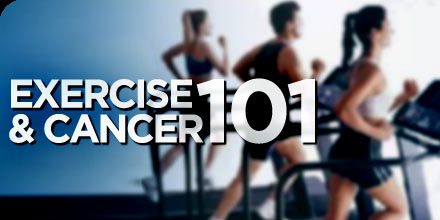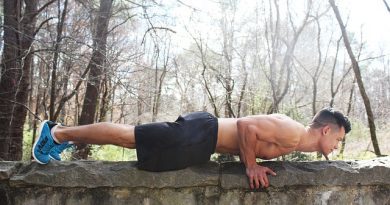Exercise and Cancer 101: Is There a Relationship?
In today’s society, there are not many people in the United States who make the time to exercise. The few that do will most likely outlive anyone who is not physically active. 83% of all deaths in the United States under that age of 65 are preventable. But, what about exercise and cancer? Can exercise help prevent it?
The top four killers in the United States are cardiovascular disease, cancer, stroke, and chronic lower respiratory diseases. The main area that I will be focusing on in this course is cancer and more specifically the correlation between exercise and cancer.
Cancer is something that can be brought on by someone’s lifestyle, environment, and/or their heredity. The percentages of each of those factors are broken down into categories that influence death:
- Lifestyle – 53%
- Environment – 21%
- Heredity – 16%
As one can see, the factors that are present add up to 90% of the risks of obtaining the disease. By having such a high percentage, it is vital for people to understand how much exercise can cut back the risks of getting cancer.
Cancer is a disease that progresses over time and is often resulting in behaviors established early in life—this is why it is so crucial to understanding the effects of exercise and cancer. There are approximately 9.5 million persons in the United States that are cancer survivors. These people survived because of all the things that they changed in their lives to better their well-being.
Disclaimer: This article is for informational purposes only and is not meant to treat or diagnose any condition. It is recommended that you speak with your doctor before starting any exercise program, changing your daily nutrition, or adding any supplements to your regimen.
Table of contents
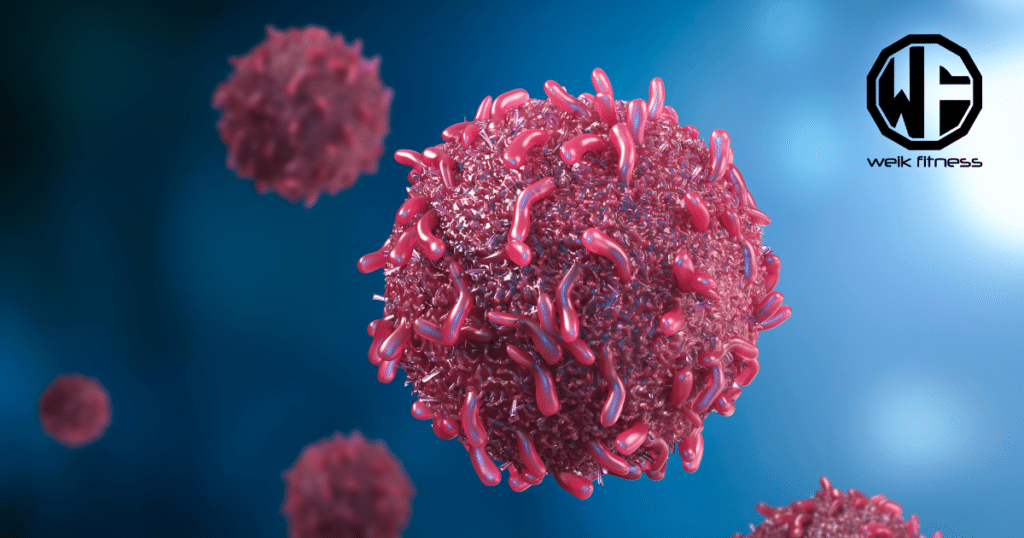
What is Cancer?
Due to the fact that cancer can affect anyone, the risk factors are much higher than some of the other diseases in the world today. Many people ask that question of how cancer develops. Is there a relationship between exercise and cancer?
“The genes in a healthy body work together regulating cell division to ensure that each new cell is a replica of the parent cell. In this way, the healthy body grows, replacing dead cells and repairing damaged ones.
Cancers develop from mutations in the genes that regulate cell division. The mutations silence the genes that ordinarily monitor replicating DNA for chemical errors. The affected cells seemingly have no built-in brakes to half cell division.
As the abnormal mass of cells, called a malignant tumor or neoplasm grows, blood vessels form to supply the tumor with the nutrients it needs to support its growth. Eventually, the tumor invades healthy tissue and may spread. Clinicians describe cancers by their size and extent, specifically noting if the tumor has spread to surrounding lymph nodes or to distant sites in the body” (Whitney, 1999).
A gene that causes cancer is called an oncogene. Within a tiny segment of DNA, is a region that can be stimulated to form an oncogene—this region is called a proto-oncogene. Without the region being activated, the region will never cause cancer. If the region does become cancerous, it spreads and acts with other oncogenes to replicate and spread the abnormal cells.
Risk Factors
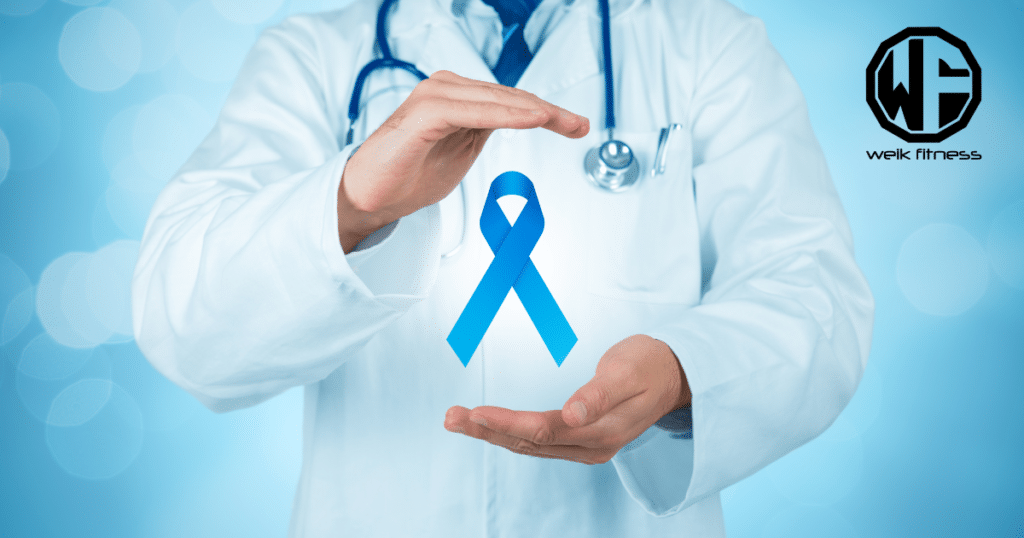
How people live their lifestyle will depend on if their risk for cancer is increased. If people use a tanning booth or smoke will all affect their risk factors. When it comes to environmental factors, exposure to radiation, the sun, water and air pollution, and smoking (second-hand smoke) are all major components of getting cancer. Some cancers appear to have run through family genes also. If a family has had a history of cancer, the risk factors for their children are higher than those families who haven’t had any history of cancer in the family.
A big factor that we have not touched on yet is exercise and cancer prevention. 100 years ago 94% of the work was done by hand. In today’s world, only 4% of the work is done by hand. Therefore, there are more desk jobs and careers where people are sedentary throughout the day than there was in the past. The main jobs that are still using manpower are construction work, ditch digging or shoveling, anything with the use of power tools, and farming. Exercise has been known to help prevent: breast cancer, colon cancer, kidney cancer, lung cancer, prostate cancer, and uterus cancer.
The ACSM recommendation is to exercise for at least 30 minutes a day, at least 4 days a week. The 30 minutes can either be all at once or split up throughout the day in 10-minute increments. Exercising cuts down on obesity, which is known to cause some types of cancers. Exercise causes an increase in hormones that could also have a positive effect on prevention. “Exercising, by speeding up metabolism, is generally believed to speed up the passages of ingested foods through the colon—thus reducing the time the colon mucosal lining is in contact with possible carcinogens” (Anonymous, 2003).
Exercise and Cancer Preventative Activities
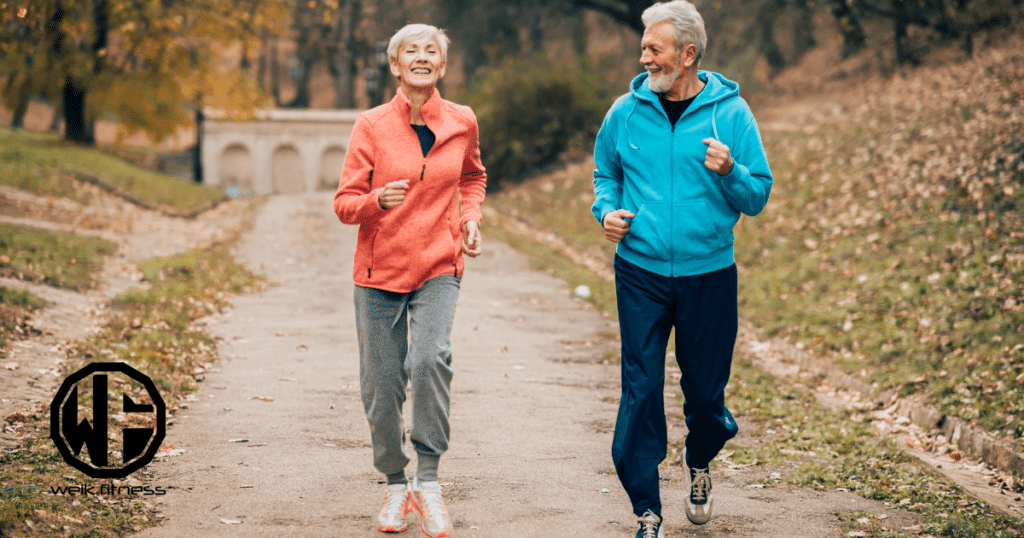
There are many different activities that can be done throughout the day to help lower the chances of getting cancer. Some of the normal activities that people do throughout the day range from:
- Walking instead of driving
- Raking
- Gardening
- Taking the stairs instead of the elevator
- Cleaning the house
- Mowing the lawn
People really need to do extra things outside of what examples are given above to get the true benefits out of exercising to prevent disease. This does not mean that people need to go out and run marathons or need to become a bodybuilder to get the effects of becoming more healthy. Some of the things that people can do that are specifically for the purpose of exercising are as follows:
- Jogging
- Brisk walking
- Weight training
- Cycling
- Dancing
- Swimming
Exercise and Cancer: What Form of Exercise is Best for You?
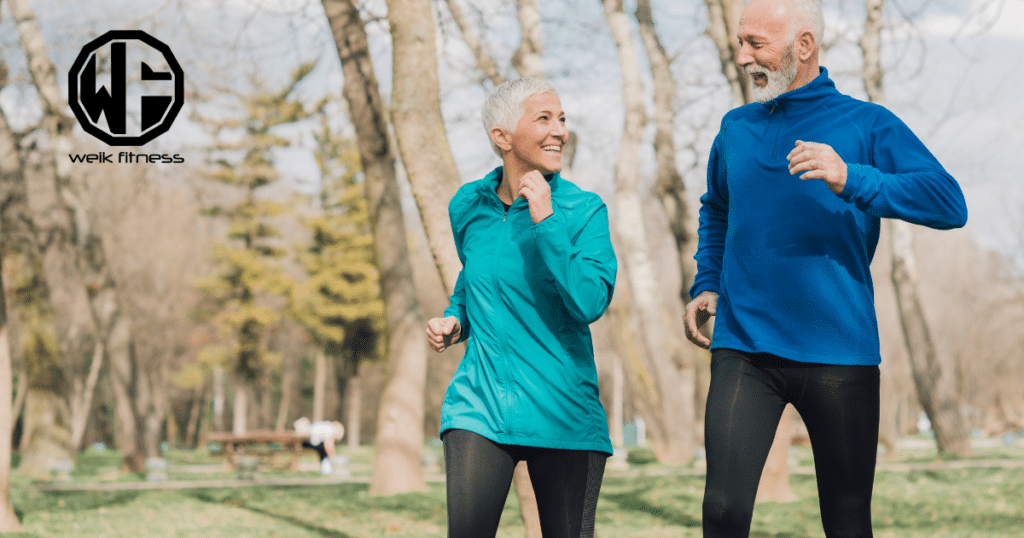
Out of all the exercises above, the best exercises out of all of them are the ones you enjoy. As long as people are actively doing something that they enjoy, they will be more likely to stick with it and enjoy doing it. If they choose something that they dislike, it will not be fun or enjoyable and they will most likely quit. It is a widely known statistic that more than 50% of exercisers will quit before they reach the six-month mark. This is due in part by having them do exercises that they do no enjoy. As a result of picking one they like, they can get the full benefit out of the exercise being through the mind, body, and spirit.
If possible, get a friend or family member to exercise with. This will not only give the person motivation, but it is also a support system. By teaming up with a partner(s), people push each other to exercise and keep up with the other person. Not only will it make them feel better about themselves and their bodies, but they will be thankful in the long run for having exceptional health. A good plan of action is also for people to set realistic goals that they can strive for and achieve. Setting and achieving lifelong goals for an appropriate weight, a healthy diet, and a physically active lifestyle are important to promote quality of life and longevity.
Diet Along with Exercise
Along with exercise, it is most advantageous to eat a well-balanced diet—which many people do not eat. Many of the foods we eat today are high in fat and cholesterol, which are unhealthy. Most people will splurge on fast food or takeout because it is fast and convenient. However, this is not the way to go; exercise and diet go hand-in-hand. If people can exercise on a daily basis and eat a well-balanced diet, their risk of getting cancer will drop down to a small percent.
Dennis Savaiano, Dean of Purdue University’s School of Consumer and Family Sciences, recommends including these guidelines in your diet: “eat plenty of fruits and vegetables, grains and legumes; avoiding empty calories from processed foods high in fat and/or sugar; exercising regularly; and limiting or abstaining from alcohol. Consumers should not let fear of pesticide residues deter them from eating fruits and vegetables because the benefits of eating these foods appear to outweigh any potential risk” (Savaiano, 2000).
Diet can also play a part in preventing breast cancer, colon cancer, and skin cancer. The biggest slogan out on the market now is the “5 A Day” slogan. What this is asking is for Americans to strive to reach five or more servings of fruits and vegetables a day. Higher intake of fruits and vegetables may be connected with a lower prevalence of colorectal and lung cancers as well as esophageal, oral, and stomach cancers. Along with this program, they encourage everyone from children to adults to get involved in physical activity during the day. They ask children to exercise for at least 60 minutes a day and adults to exercise at least 30 minutes per day.

People should also be sure to add variety to their diet to ensure proper nutritional balances of protein, carbohydrates, and fats. Some fats, such as monounsaturated and omega-3 fatty acids, are linked with reduced risk of heart disease and perhaps even cancer. People should also make sure that they get enough protein in their diet. Protein can be found in eggs, fish, legumes, lean poultry, low-fat meat, nonfat and low-fat dairy products, nuts, and seeds. Carbohydrates are also necessary for people to ingest because not only is it a form of energy, but they are also rich in essential nutrients, phytochemicals, and fiber—such as whole grains, vegetables, legumes, and fruit.
Obesity and Exercise
Obesity plays a key role in getting cancers in the United States. More than 30% of Americans are considered obese. Some of the most common cancers such as colorectal cancer and postmenopausal breast cancer are due to obesity. There is increasing evidence that indicates that being overweight increases the threat for recurrence of many cancers. An increase in exercise has been proven to lower weight and obesity in humans. Therefore exercise is an important component in diminishing the chances of getting some forms of cancer. There is a correlation between exercise and cancer.
Exercise and Cancer: The Correlation
As statistics have shown in recent studies, exercise is a common way to lower the chances of getting numerous types of cancers. If people make an effort to schedule times to exercise in their day, they could increase their longevity. Not only will these individuals lower their chances for cancer, but they will also:
- Lower stress levels
- Increase flexibility
- Feel better about themselves
- Look better
Most of them will have the feeling of accomplishment in everything they do—knowing that they made a better life for themselves and their family. There is only one true wealth, and that is health.
Sources for exercise and cancer article:
Whitney, Eleanor Noss & Rolfes, Sharon Rady. (1999). Understanding Nutrition (8th
Ed.). Belmont: West/Wadsworth.
Anonymous. (2003, April). Exercise and Cancer Prevention [Electronic Version].
Cancer Information Service in the Holden Comprehensive Cancer Center.
Retrieved from https://uihc.org/health-topics.
Savaiano, Dennis. (2000, February). Studies Confirm Diet and Exercise Are Key in
Cancer Prevention. Personal MD: Your Lifeline Online.
Baechle, Thomas R. & Earle, Roger W. (2000). Essentials of Strength Training and
Conditioning (2nd Ed.). Champaign: Human Kinetics.
Brown, Jean K. (2003). Nutrition and Physical Activity During and After Cancer
Treatment: An American Cancer Society Guide for Informed Choices. CA: A Cancer Journal for Clinician, 53, 268-291.
Ries LAG, Eisner MP, Kosary CL, et al, eds. SEER Cancer Statistics Review, 1975-
- Bethesda, MD: National Cancer Institute; 2003.
Shils ME, Olson JA. (1999). Modern Nutrition in Health and Disease (9th Ed.).
Baltimore: Williams & Wilkins.


